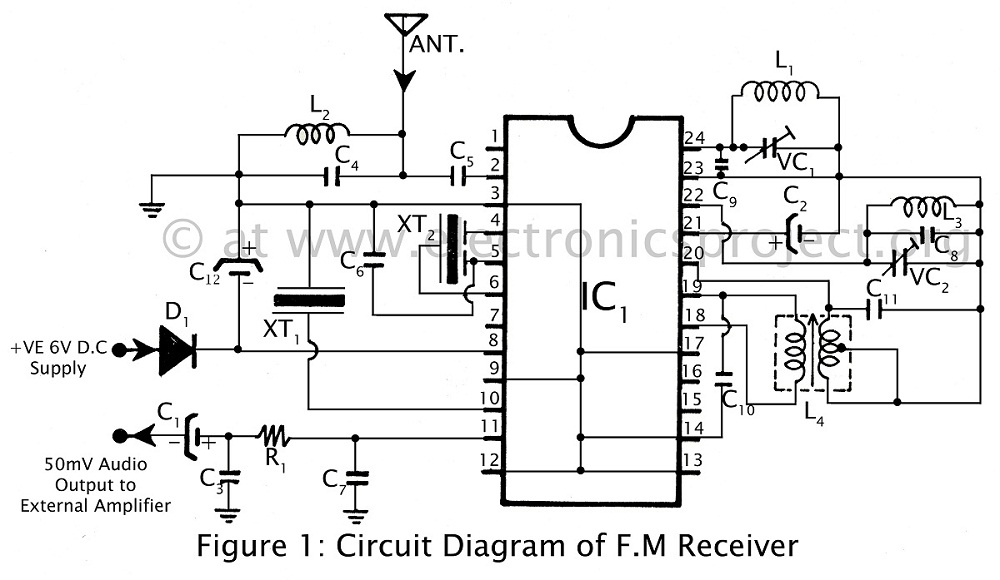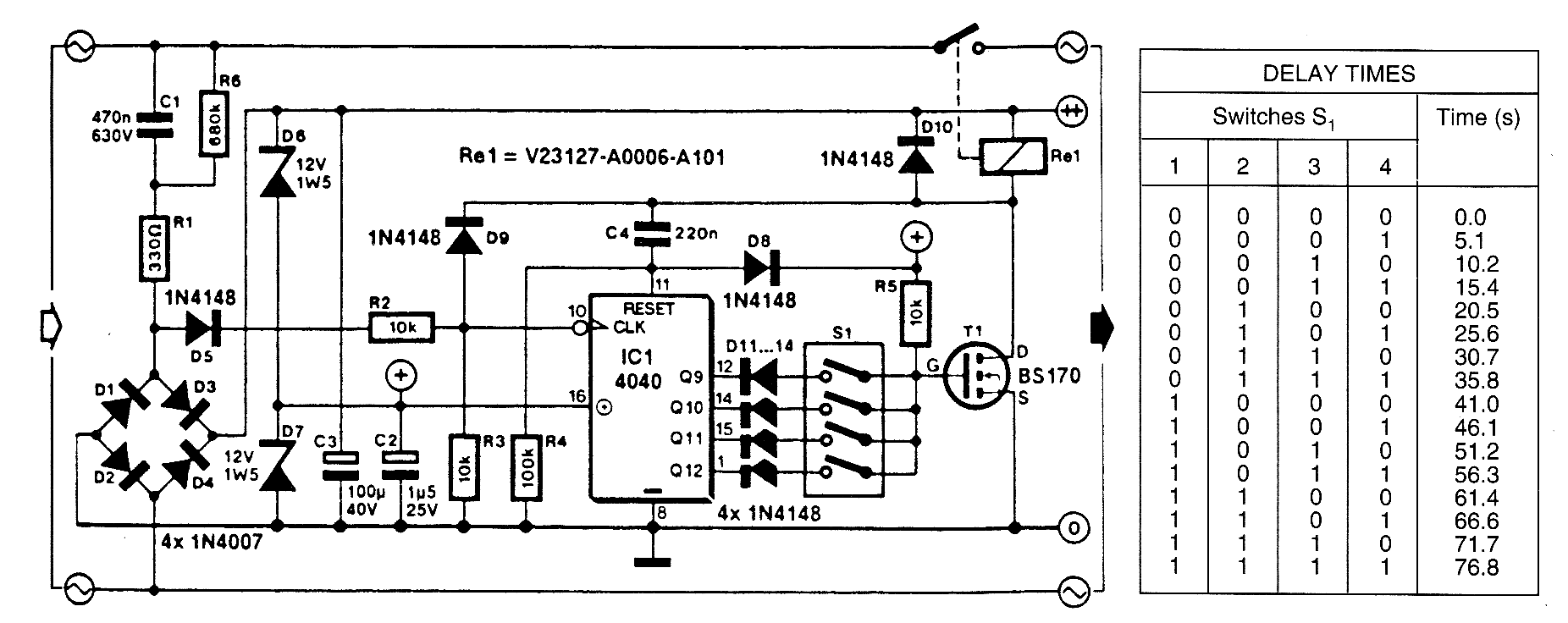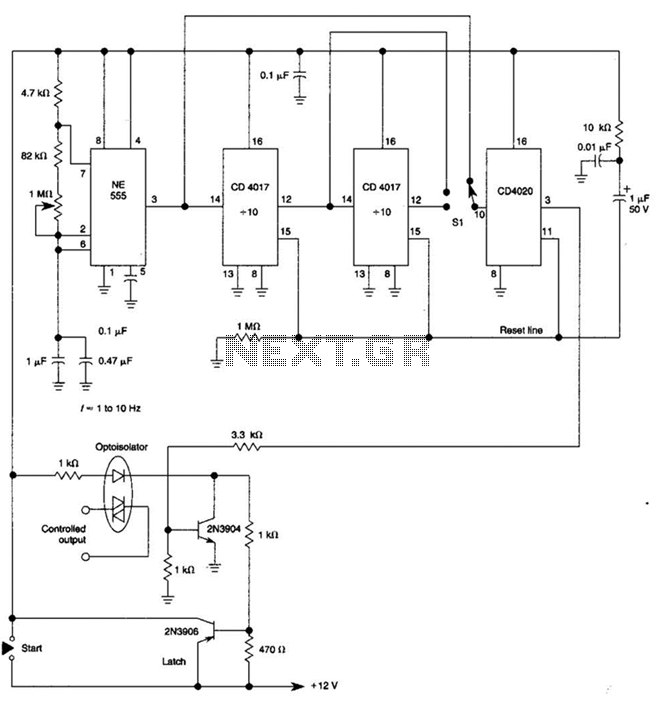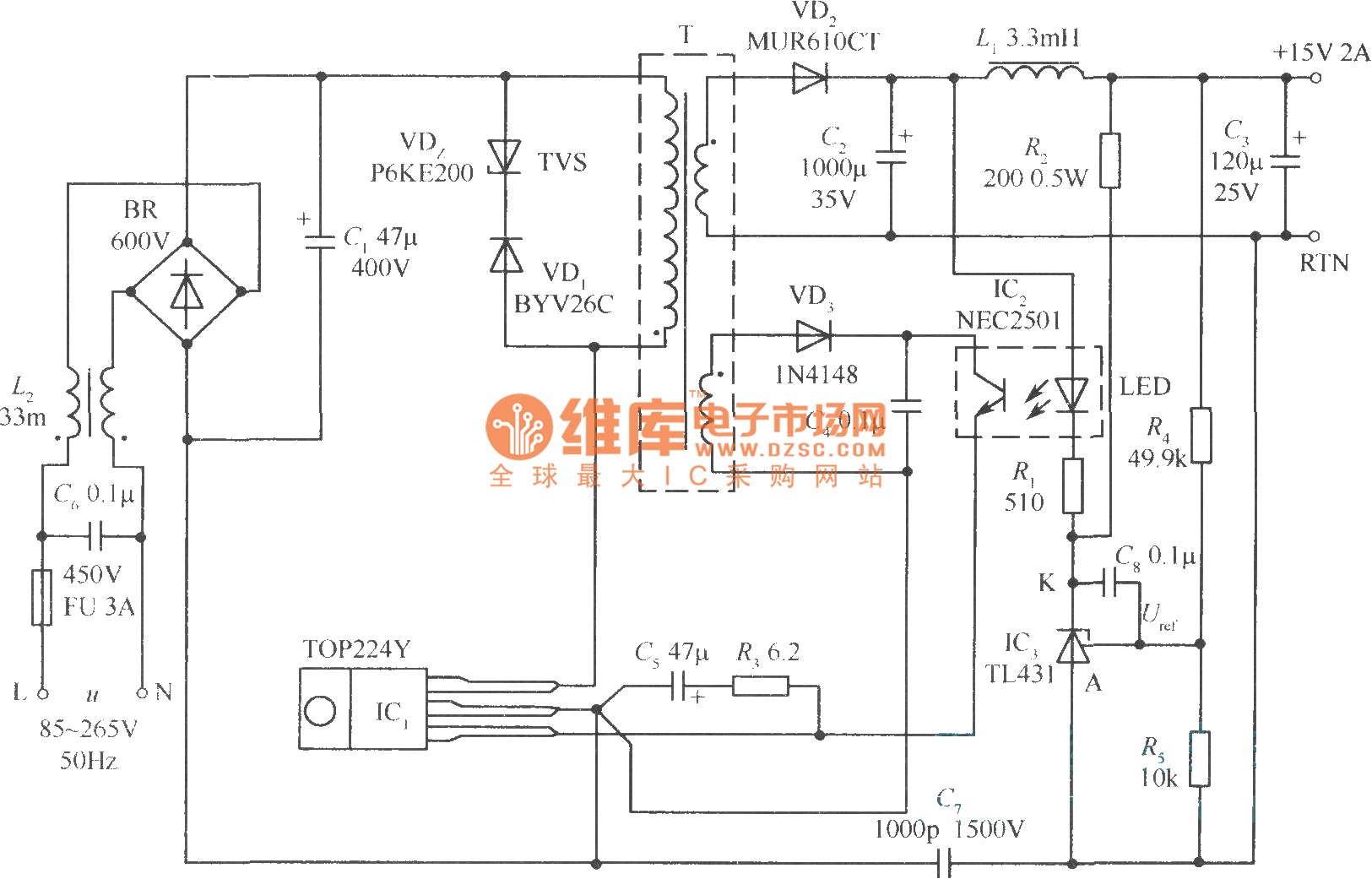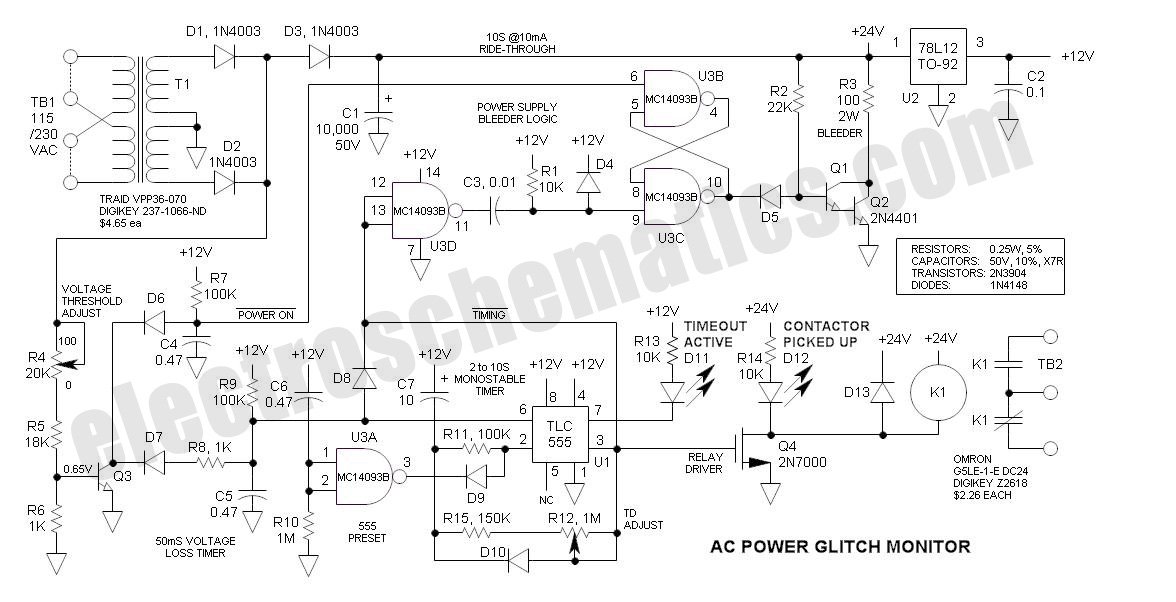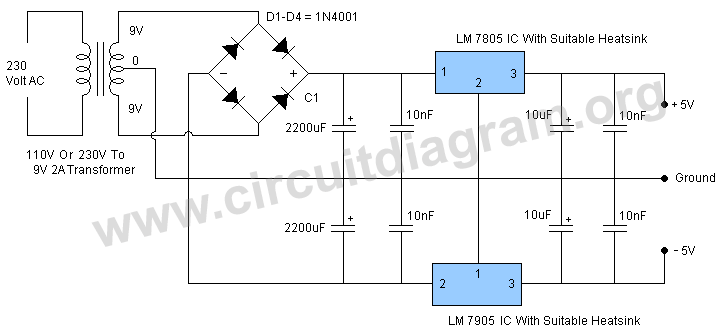
how to build 2 stage mains power
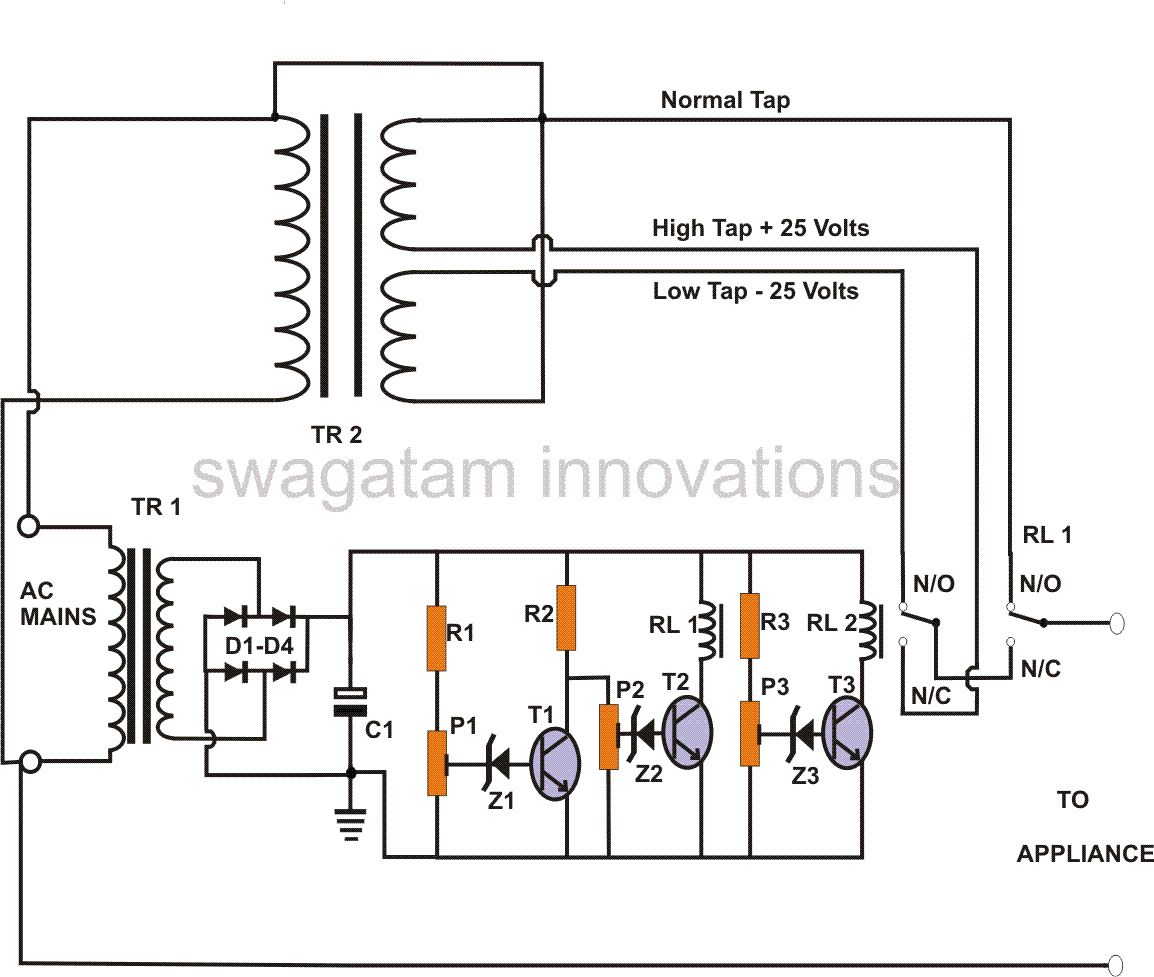
This power stabilizer circuit utilizes one relay to select either the high or low tap from the stabilizer transformer at a specific voltage level. The second relay maintains the normal mains voltage, but when a voltage fluctuation occurs, it toggles to choose the appropriate high tap via the first relay contacts. The circuit is straightforward to construct and provides a two-stage correction of the input mains voltage. Additionally, a method for converting a standard transformer into a stabilizer transformer is included, supported by circuit schematics. The first relay is designed to switch between two voltage extremes (high and low) that are unsuitable for appliances. This switching allows the first relay to select a conditioned voltage from the second relay through its normally closed contacts. The second relay ensures that it provides the correct voltages from the stabilizer transformer, ready for the first relay's toggling during unsafe voltage levels. Under normal voltage conditions, the first relay remains engaged, connecting the normal voltage to the appliance through its normally open contacts. When the voltage rises, the first transistor (T1) gradually conducts, and at a predetermined level set by a potentiometer (P1), T1 fully activates and shuts off the first relay. The relay then connects the corrected lower voltage supplied by the second relay through its normally closed contacts to the output. In the event of low voltage, both T1 and the second transistor (T2) cease conducting, resulting in a similar outcome; however, this time the voltage supplied from the second relay to the first relay will be high, ensuring the output receives the necessary corrected voltage. The second relay is energized by the third transistor (T3) at a specific voltage level determined by a second potentiometer (P3) situated between the two voltage extremes. Its contacts are connected to the stabilizer transformer taps to appropriately select the desired voltage. The construction process involves first inserting the transistors with adequate spacing for surrounding components, soldering, and trimming their leads. Following this, the remaining components are inserted and interconnected through soldering, guided by the circuit schematic for correct orientation and placement. The subsequent steps include constructing the power stabilizer transformer and performing testing procedures. After these tasks are completed, the tested circuit assembly can be integrated with the appropriate transformers. The entire setup should then be enclosed in a robust metal casing for operational use.
This power stabilizer circuit is designed to ensure the reliable operation of electrical appliances by maintaining stable voltage levels. The dual relay configuration allows for effective voltage regulation by automatically selecting the proper tap from the transformer based on real-time voltage conditions. The first relay's capability to switch between high and low voltage taps enables it to protect connected devices from damage due to voltage fluctuations. The second relay acts as a safeguard, ensuring that the output voltage is maintained within acceptable limits.
The use of transistors in this circuit adds to its efficiency and responsiveness. The transistors function as switches, controlling the relays based on the voltage detected at their respective inputs. The settings of the potentiometers (P1 and P3) allow for fine-tuning of the circuit, accommodating various appliances and their voltage tolerances.
The construction of the circuit involves careful attention to detail, particularly in the soldering of components and ensuring proper connections. The schematic serves as a critical reference throughout the assembly process, ensuring that each component is placed correctly to achieve optimal performance.
Once assembled, testing the circuit is essential to verify its functionality and reliability. This involves measuring the output voltage under different input conditions to ensure that the circuit responds appropriately to fluctuations. After successful testing, the circuit can be integrated with a suitable transformer, which will further enhance its performance by providing the necessary input voltage levels.
Finally, housing the completed circuit in a sturdy metal enclosure not only protects the components from physical damage but also minimizes electromagnetic interference, ensuring stable operation in various environments. The overall design and construction of this power stabilizer circuit exemplify a practical solution for voltage regulation, making it an invaluable addition to any electrical setup.In this power stabilizer circuit, one relay is wired to select the high or the low tap from the stabilizer transformer at some particular voltage level; whereas the second relay keeps the normal mains voltage switched in, but the moment there`s a voltage fluctuation it toggles and selects the appropriate HOT tap via the first relay contacts. A simple power stabilizer circuit discussed here is very easy to build and yet is able to provide a 2-stage correction of the input mains. A simple method of converting a normal transformer into a stabilizer transformer has also been discussed using circuit schematics. Basically the idea here is to make relay #1 switch at two different mains voltage extremes (high and low), which are considered not suitable for the appliances.
This switching enables this relay to select an appropriately conditioned voltage from another relay through its N/C contacts. The contacts of this second relay #2 makes it sure that it selects a appropriate voltages from the stabilizer transformer and keeps it ready for the relay #1 whenever it toggles during dangerous voltage levels.
At normal voltages, relay #1 remains activated and selects the normal voltage through its N/O contacts. As long as the voltage is normal, T1 stays switched off. Consequently T2 at this moment remains switched on. Relay #1 is activated, and its N/O contacts connect the NORMAL AC to the appliance. If the voltage tends to rise, T1 slowly conducts, and at a certain level (decided by the setting of P1), T1 fully conducts and shuts off T1 and relay #1.
The relay immediately connects the corrected (lowered) voltage supplied by relay #2 through its N/C contacts to the output. Now, in case of a low voltage T1 and T2 both will stop conducting, producing the same result as above, but this time the supplied voltage from relay #2 to relay #1 will be high, so that the output receives the required corrected level of voltage.
Relay #2 is energized by T3 at a particular voltage level (as per the setting of P3) in between the two voltage extremes. Its contacts are wired to the stabilizer transformer tapping so that it selects the desired voltage appropriately.
Begin the construction by inserting the transistors first, keeping ample space between them so that the other can be accommodated around each of them. Solder and cut off their leads. Next, insert the rest of the components and interlink them with each other and the transistors by soldering.
Take the help of the circuit schematic for their proper orientations and placements. The next page deals with the construction of the power stabilizer transformer and the testing procedure. After these procedures are completed, you may integrate the tested circuit assembly to the appropriate transformers.
The whole set up then may be housed inside a tough metal enclosure and installed for the desired operations. 🔗 External reference
This power stabilizer circuit is designed to ensure the reliable operation of electrical appliances by maintaining stable voltage levels. The dual relay configuration allows for effective voltage regulation by automatically selecting the proper tap from the transformer based on real-time voltage conditions. The first relay's capability to switch between high and low voltage taps enables it to protect connected devices from damage due to voltage fluctuations. The second relay acts as a safeguard, ensuring that the output voltage is maintained within acceptable limits.
The use of transistors in this circuit adds to its efficiency and responsiveness. The transistors function as switches, controlling the relays based on the voltage detected at their respective inputs. The settings of the potentiometers (P1 and P3) allow for fine-tuning of the circuit, accommodating various appliances and their voltage tolerances.
The construction of the circuit involves careful attention to detail, particularly in the soldering of components and ensuring proper connections. The schematic serves as a critical reference throughout the assembly process, ensuring that each component is placed correctly to achieve optimal performance.
Once assembled, testing the circuit is essential to verify its functionality and reliability. This involves measuring the output voltage under different input conditions to ensure that the circuit responds appropriately to fluctuations. After successful testing, the circuit can be integrated with a suitable transformer, which will further enhance its performance by providing the necessary input voltage levels.
Finally, housing the completed circuit in a sturdy metal enclosure not only protects the components from physical damage but also minimizes electromagnetic interference, ensuring stable operation in various environments. The overall design and construction of this power stabilizer circuit exemplify a practical solution for voltage regulation, making it an invaluable addition to any electrical setup.In this power stabilizer circuit, one relay is wired to select the high or the low tap from the stabilizer transformer at some particular voltage level; whereas the second relay keeps the normal mains voltage switched in, but the moment there`s a voltage fluctuation it toggles and selects the appropriate HOT tap via the first relay contacts. A simple power stabilizer circuit discussed here is very easy to build and yet is able to provide a 2-stage correction of the input mains. A simple method of converting a normal transformer into a stabilizer transformer has also been discussed using circuit schematics. Basically the idea here is to make relay #1 switch at two different mains voltage extremes (high and low), which are considered not suitable for the appliances.
This switching enables this relay to select an appropriately conditioned voltage from another relay through its N/C contacts. The contacts of this second relay #2 makes it sure that it selects a appropriate voltages from the stabilizer transformer and keeps it ready for the relay #1 whenever it toggles during dangerous voltage levels.
At normal voltages, relay #1 remains activated and selects the normal voltage through its N/O contacts. As long as the voltage is normal, T1 stays switched off. Consequently T2 at this moment remains switched on. Relay #1 is activated, and its N/O contacts connect the NORMAL AC to the appliance. If the voltage tends to rise, T1 slowly conducts, and at a certain level (decided by the setting of P1), T1 fully conducts and shuts off T1 and relay #1.
The relay immediately connects the corrected (lowered) voltage supplied by relay #2 through its N/C contacts to the output. Now, in case of a low voltage T1 and T2 both will stop conducting, producing the same result as above, but this time the supplied voltage from relay #2 to relay #1 will be high, so that the output receives the required corrected level of voltage.
Relay #2 is energized by T3 at a particular voltage level (as per the setting of P3) in between the two voltage extremes. Its contacts are wired to the stabilizer transformer tapping so that it selects the desired voltage appropriately.
Begin the construction by inserting the transistors first, keeping ample space between them so that the other can be accommodated around each of them. Solder and cut off their leads. Next, insert the rest of the components and interlink them with each other and the transistors by soldering.
Take the help of the circuit schematic for their proper orientations and placements. The next page deals with the construction of the power stabilizer transformer and the testing procedure. After these procedures are completed, you may integrate the tested circuit assembly to the appropriate transformers.
The whole set up then may be housed inside a tough metal enclosure and installed for the desired operations. 🔗 External reference
